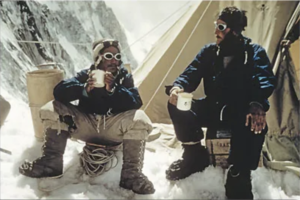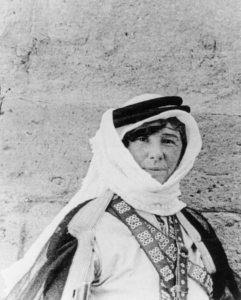Ah, the timeless allure of tea, interwoven with the spirit of adventure across centuries. From ancient explorers journeying to distant lands in pursuit of this precious leaf to the mystical tea ceremonies that symbolise cultural exchange, tea has been a steadfast companion to those who seek the thrill of the unknown.
Throughout history, tea has been a catalyst for exploration and discovery. Imagine the intrepid souls of the Age of Exploration, venturing to uncharted territories in search of new trade routes and exotic treasures. The allure of tea was undeniable, and its discovery fuelled the passion for even greater adventures. It became a symbol of connection between different cultures, as tea ceremonies brought people together, fostering a sense of unity amidst diverse traditions.
Tea, with its tantalising aroma and soothing qualities, has accompanied countless adventurers throughout their quests. From the intrepid mountaineers scaling treacherous peaks to the fearless explorers traversing uncharted jungles, tea has provided them with a comforting respite and a source of rejuvenation amidst the hardships they faced.
 In the 1950s, Sir Edmund Hillary and Tenzing Norgay made history as the first climbers to reach the summit of Mount Everest. During their arduous journey, tea played a vital role in keeping them nourished and energised. Sherpas, renowned for their mountaineering expertise, have a tradition of drinking butter tea, also known as “po cha,” to combat the harsh conditions of high-altitude climbs. Hillary and Norgay embraced this tea-drinking tradition, using the power of tea to fuel their adventurous ascent.
In the 1950s, Sir Edmund Hillary and Tenzing Norgay made history as the first climbers to reach the summit of Mount Everest. During their arduous journey, tea played a vital role in keeping them nourished and energised. Sherpas, renowned for their mountaineering expertise, have a tradition of drinking butter tea, also known as “po cha,” to combat the harsh conditions of high-altitude climbs. Hillary and Norgay embraced this tea-drinking tradition, using the power of tea to fuel their adventurous ascent.
Tea has transcended borders and cultures, becoming a companion to explorers from all walks of life. Roald Amundsen, the Norwegian explorer, led the first successful expedition to the South Pole in 1911. Amundsen and his team faced extreme cold and challenging conditions on their journey. To maintain warmth and energy, they consumed copious amounts of hot tea, which not only provided comfort but also replenished their spirits during the gruelling trek.
Freya Stark, the intrepid English explorer, explored the Middle East during the 20th century, covering regions like Syria, Iraq, and Iran. Stark was an avid tea enthusiast and found solace in tea amidst her rugged expeditions. She often interacted with locals over a cup of tea, fostering connections and gaining insights into the diverse cultures she encountered.
 In the 19th century, Isabella Bird, a pioneering British explorer and naturalist, journeyed extensively through Asia, including Japan, China, India, and the Middle East. She documented her adventures in her travel writings, often mentioning her encounters with various types of tea. Bird immersed herself in local cultures, partaking in tea ceremonies and enjoying the soothing embrace of tea during her travels.
In the 19th century, Isabella Bird, a pioneering British explorer and naturalist, journeyed extensively through Asia, including Japan, China, India, and the Middle East. She documented her adventures in her travel writings, often mentioning her encounters with various types of tea. Bird immersed herself in local cultures, partaking in tea ceremonies and enjoying the soothing embrace of tea during her travels.
Even in the modern era, tea continues to play a pivotal role in adventures around the globe. Sir Ranulph Fiennes, known as one of the world’s greatest living explorers, has undertaken numerous challenging expeditions, including reaching both poles and climbing Mount Everest. Tea has been a staple in Fiennes’ provisions during his adventurous endeavours, offering warmth, hydration, and a sense of comfort in the most unforgiving environments.
Through the annals of history, explorers and adventurers have found solace in the simple act of savouring tea amidst the vastness of the unexplored. In their journals, they often recount tales of pausing for tea breaks, where time seemed to slow, and the beverage provided respite from the tumultuous journey. Tea became a ritual, a moment to reflect on their progress, to rejuvenate their spirits, and to bond with fellow travellers. It was an anchor in the ever-changing currents of exploration.
One such tale hails from the daring age of Antarctic exploration, where the legendary Ernest Shackleton and his crew faced unfathomable challenges as they sought to traverse the icy wastelands of the South Pole. In the harsh Antarctic conditions, where survival itself was uncertain, a hot cup of tea became a beacon of hope for Shackleton and his men. It was a source of comfort and warmth amidst the frozen expanse, an elixir that infused them with the resilience to persevere against all odds.
 In the heart of the Amazon rainforest, a different kind of adventure unfolded. From the untamed depths of the jungle emerged explorers seeking to unravel its secrets. Among them, the renowned ethnobotanist Richard Evans Schultes, who became enamoured with the traditional use of tea-like infusions brewed from various plant leaves by the indigenous people. These “master plants,” as Schultes referred to them, played a central role in the rituals of the tribes and were believed to facilitate communication with the spirits of the forest. Their tea ceremonies became an integral part of Schultes’ own journey, connecting him to the wisdom of the rainforest and its inhabitants.
In the heart of the Amazon rainforest, a different kind of adventure unfolded. From the untamed depths of the jungle emerged explorers seeking to unravel its secrets. Among them, the renowned ethnobotanist Richard Evans Schultes, who became enamoured with the traditional use of tea-like infusions brewed from various plant leaves by the indigenous people. These “master plants,” as Schultes referred to them, played a central role in the rituals of the tribes and were believed to facilitate communication with the spirits of the forest. Their tea ceremonies became an integral part of Schultes’ own journey, connecting him to the wisdom of the rainforest and its inhabitants.
In the age of space exploration, even astronauts found comfort in the embrace of tea. On the Apollo 11 mission, the first manned mission to land on the moon, the astronauts relied on a special tea bag designed for use in zero gravity. Tea, in its seemingly humble form, played a significant role in human exploration, even extending its influence beyond the confines of our planet.
The legacy of tea and adventure extends beyond those renowned names of exploration; it has left its mark on ‘ordinary’ individuals seeking their own quests. From the solo hiker navigating the wilderness trails to the intrepid urban explorer, seeking out that new piece of Banksy art…. it accompanies the everyday adventurers on their journeys of self-discovery and nature’s embrace.

From weekend trekking escapades, to the simpler, yet equally rewarding, mid-week escapes, tea becomes the soul-soothing balm that sustains adventurers as they traverse rugged terrains and breathtaking landscapes.
This is the beauty of tea – it embodies the timeless essence of adventurous spirits from ages past while remaining as relevant and enticing in the modern-day. It celebrates our desire to seek new horizons and create unforgettable memories. Tea is not just a beverage; it’s an enabler, a conduit to the very heart of adventure itself.
In the ever-evolving landscape of tea, a notable shift has emerged – a growing fascination with caffeine-free herbal tea. As modern-day adventurers seek a balance between the thrill of exploration and the need for relaxation, caffeine-free herbal tea has stepped into the limelight, offering a different dimension to the traditional tea experience.
For those who crave adventure, caffeine has long been a trusted ally, providing a natural source of energy to conquer challenges and seize the day. In the footsteps of explorers from centuries past, the invigorating properties of caffeinated tea have fuelled adventurers on their daring expeditions.
However, in the pursuit of adventure, there is also a profound desire for moments of tranquillity and reflection. Amidst the exhilarating escapades, there arises a need to pause and connect with the serenity of nature. Herein lies the allure of herbal tea. Embracing the essence of herbs, roots, flowers, spices and now mushrooms, herbal teas offer a unique symphony of flavours and aromatic profiles that cater to the senses in a different way.
Interested in understanding about the evolving role of mushrooms in tea? check out: The Rise of Functional Mushrooms
As we savour the warmth of our tea-filled flasks on our journeys, whether conquering mountains or wandering through undiscovered landscapes, herbal tea stands as a testament to the versatility of the tea experience. It complements the thrill of exploration, enriches our connection with the natural world, and allows us to find moments of peace and restoration amidst our grand adventures.
And now, as we stand on the precipice of a new era, tea continues to evolve with us. Fungo carries the essence of tea’s legacy while embracing the spirit of contemporary exploration. It celebrates our desire to seek new horizons, to experience life’s wonders, and to create unforgettable memories.
Make sure to subscribe to our blog and follow our socials for more mushroomy goodness, and share with any pals who you think might be interested. And if you’re interested in giving Lions Mane mushroom a go, you may well be interested in Elevate, our herbal tea blend infused with Lion’s Mane, priming you for that next adventure.
Until next time,
Tom